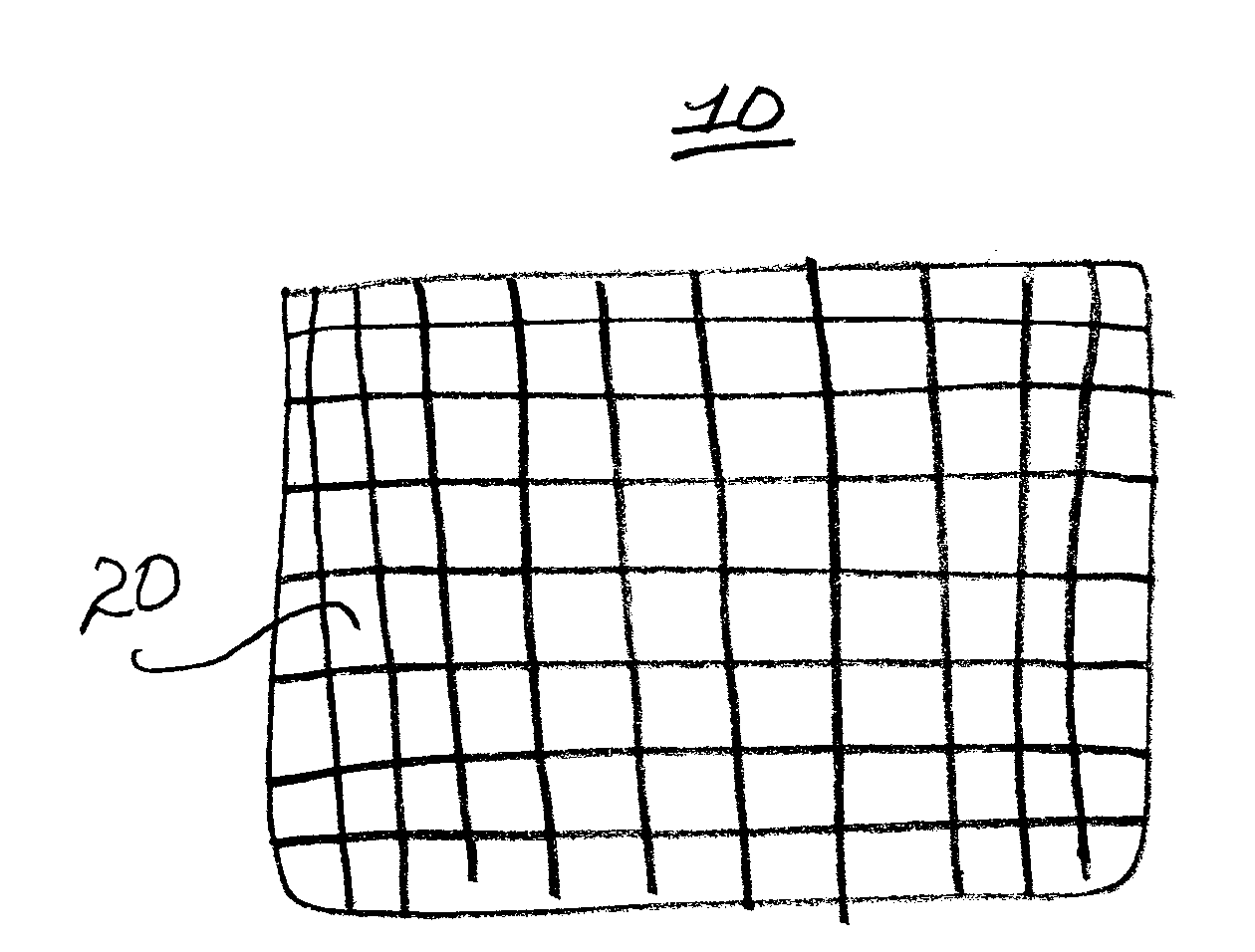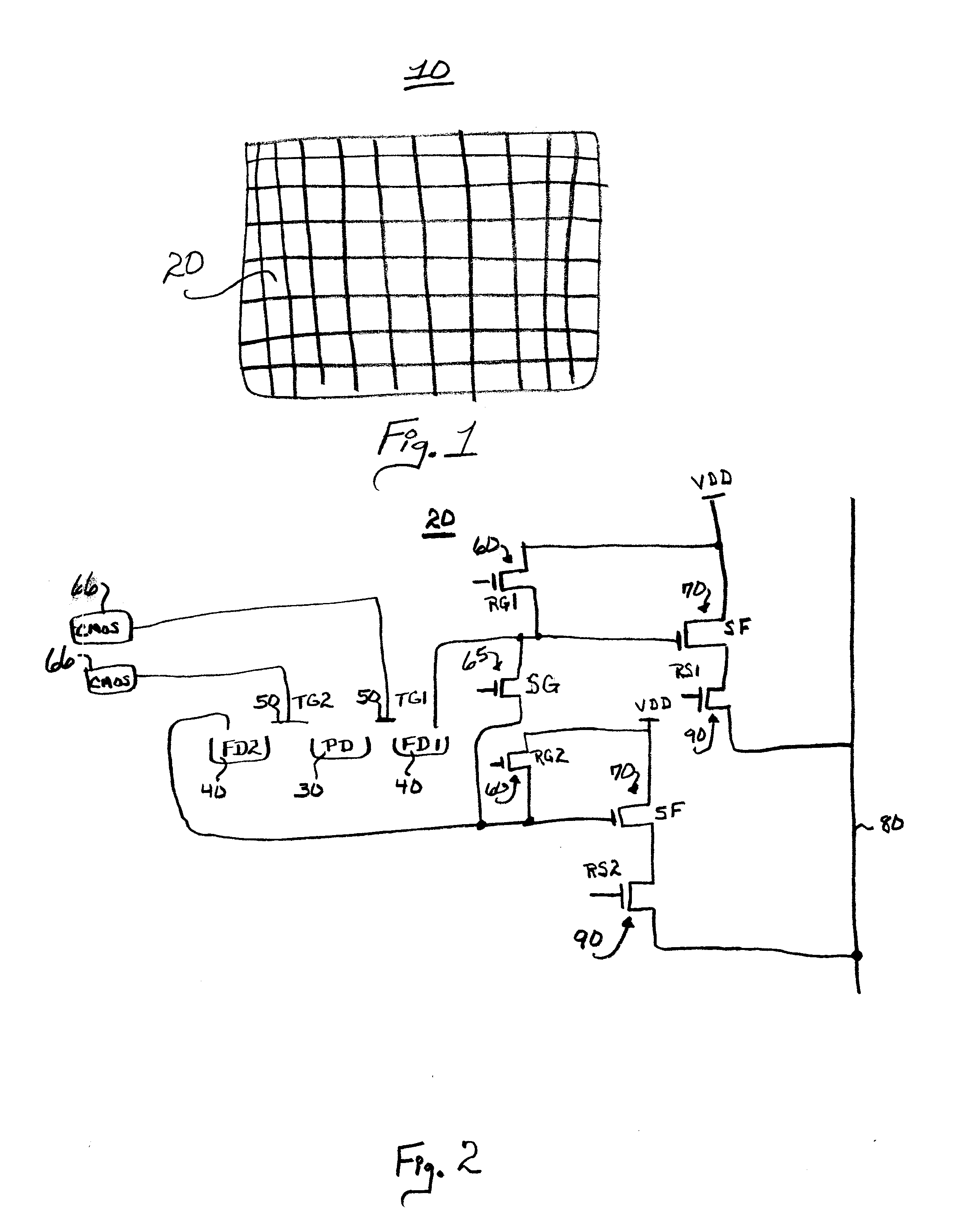Multi image storage on sensor
a sensor and image technology, applied in the field of cmos image sensors, can solve the problems of readout noise and non-uniformity, image sensor devices such as ccds that integrate charge created by incident photons, and limited dynamic range, so as to improve sensitivity, eliminate motion blur, and extend the dynamic range and autofocus
- Summary
- Abstract
- Description
- Claims
- Application Information
AI Technical Summary
Benefits of technology
Problems solved by technology
Method used
Image
Examples
Embodiment Construction
[0028]Before discussing the present invention in detail, it is instructive to note that the present invention is preferably used in, but not limited to, a CMOS active pixel sensor. Active pixel sensor refers to an active electrical element within the pixel, more specifically an amplifier. CMOS refers to complementary metal oxide silicon type electrical components such as transistors which are associated with the pixel, but typically not in the pixel, and which are formed when the source / drain of a transistor is of one dopant type and its mated transistor is of the opposite dopant type. CMOS devices include advantages on of which is they consume less power.
[0029]Referring to FIG. 1, there is shown an image sensor 10 of the present invention having a plurality of pixels 20 arranged in a two-dimensional array. Although a two-dimensional array is shown as a preferred embodiment, the present invention is not limited to a two-dimensional array; as is apparent to those skilled in the art, ...
PUM
 Login to View More
Login to View More Abstract
Description
Claims
Application Information
 Login to View More
Login to View More - R&D
- Intellectual Property
- Life Sciences
- Materials
- Tech Scout
- Unparalleled Data Quality
- Higher Quality Content
- 60% Fewer Hallucinations
Browse by: Latest US Patents, China's latest patents, Technical Efficacy Thesaurus, Application Domain, Technology Topic, Popular Technical Reports.
© 2025 PatSnap. All rights reserved.Legal|Privacy policy|Modern Slavery Act Transparency Statement|Sitemap|About US| Contact US: help@patsnap.com



